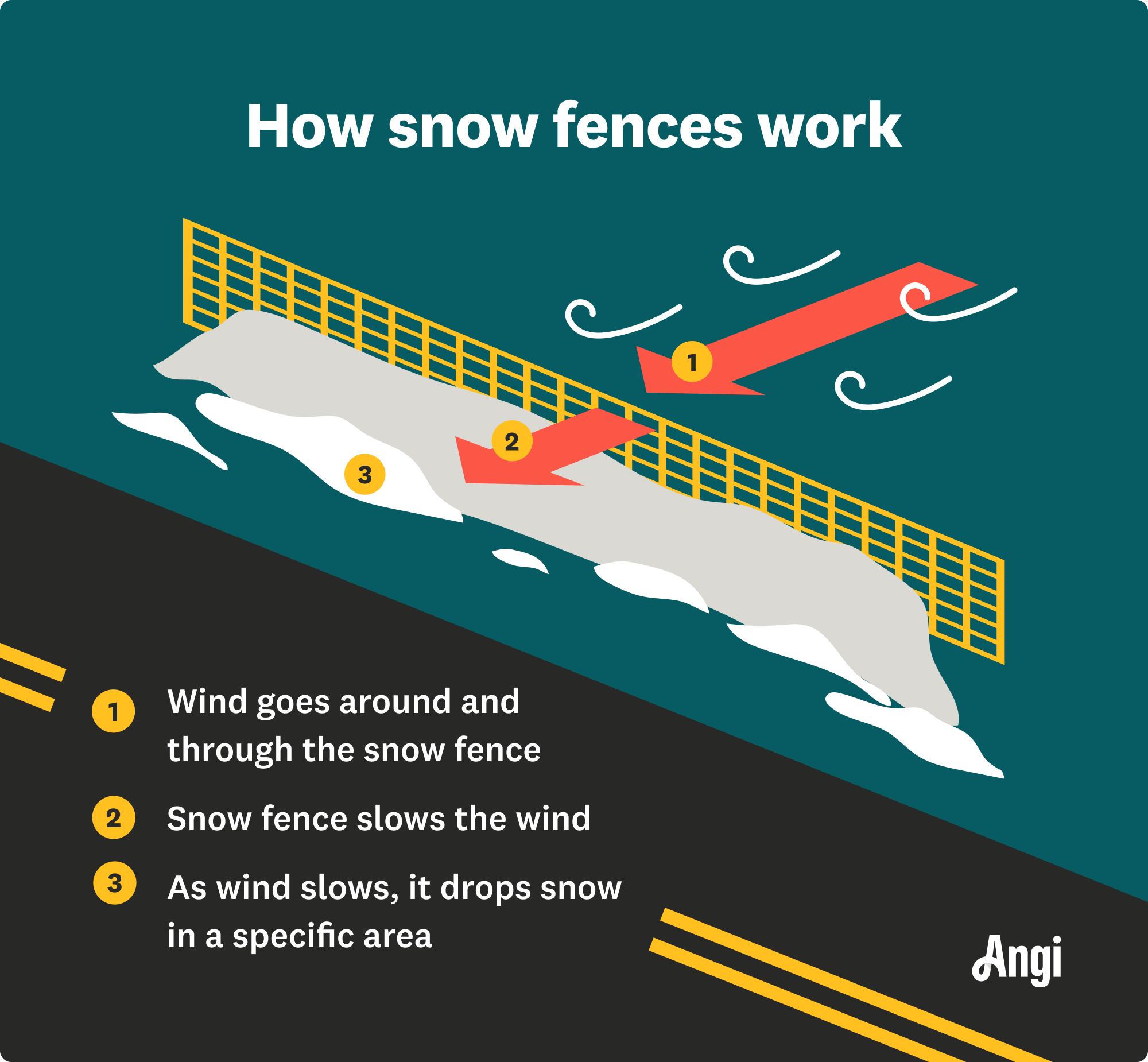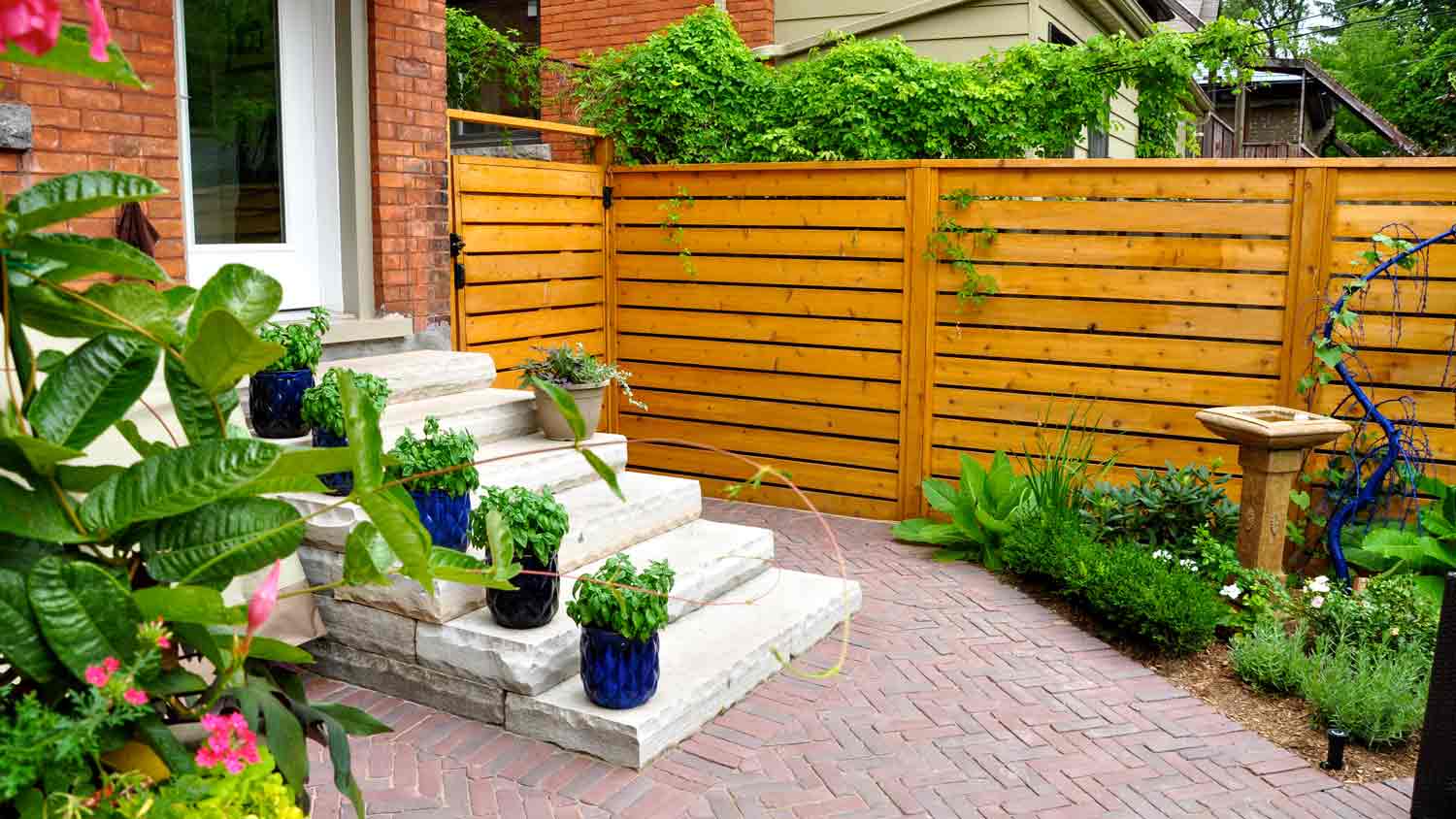
Before you build that sturdy wall, you should know about cinder block prices. Learn about different cinder block wall cost factors in this handy guide.
Snowdrifts? S’no problem!


Wind can carry snow and pile it up on driveways, walkways, and doorsteps.
A snow fence breaks up wind streams, forcing them to drop snow in certain areas.
With enough space, you can add a permanent or temporary snow fence to your property.
Snow is beautiful, but it can also be a nuisance or even a hazard. You may have seen plastic mesh fencing lining roadways in the winter months, but what exactly is a snow fence? These modest barriers help control where snow falls and accumulates. This guide details what a snow fence is, how it works, and when to use one on your property.
Snow fencing is one of the most common and effective techniques for managing snowdrifts. A snow fence is usually a temporary fence set up to force snow to fall in specific areas. The idea is to prevent that snow from falling elsewhere, namely on roadways or other areas where it could cause problems.
Snow fences work by disrupting the wind streams that carry snow along the ground. When the wind hits a snow fence, it's forced to blow through or around the mesh or slats of the fence, which slows it down. As the wind slows, it starts to drop any snow it's carrying on the other side of the fence. For example, if a gust of wind carrying snow from the east hits a snow fence, snowdrifts will begin forming on the west side of the fence.


Snow fencing can be made from several different materials.
Plastic is one of the most common snow fencing materials since it’s lightweight and easy to install and move. It’s ideal for a temporary fence that you only want in place for large storms.
Snow fencing made from wood slats offers a more permanent solution that works well for households that deal with seasonal snow. Wood is a more aesthetically appealing fencing option than plastic, and it tends to last longer.
Metal wire mesh makes for the sturdiest snow fencing, and it lasts the longest of the manmade material options. However, metal snow fencing requires routine preventative maintenance to stop rust from forming.
In some states, landowners are encouraged to leave strips of vegetation upwind from major roadways as a living snow fence. Materials can include bushes and shrubs, tree lines, and crops such as corn. This can also be a great option for residential installations since the snow fence can be incorporated into your landscaping.
While snow fences are common along highways, they can be used effectively on residential properties with enough acreage for proper spacing. Consider installing a snow fence in the following situations:
Your local area gets heavy snowfall each year.
Your home entrances are frequently snowed in.
You have a long driveway that tends to get covered by snowdrifts.
There are bodies of water on your property where you can direct the snow for later use.
For a snow fence to be effective, it has to be installed correctly. This means installing the fence about a half foot off the ground and placing enough space between the fence and the area you're trying to protect from snow. For every foot of height, a snow fence should be placed 35 feet upwind. This distance may vary depending on the fence manufacturer’s specifications.
For example, if you're trying to keep snow off your driveway using a six-foot-tall snow fence, the fence should be installed 210 feet upwind from your driveway. Install it any closer, and the snow fence will actually cause more snow to pile on your driveway rather than prevent it.
To ensure your snow fence is installed properly, hire a local fence installer for the job.
You can purchase rolls of plastic snow fencing material from home improvement centers and similar stores. Expect prices between $0.35 and $1.65 per linear foot for the fencing itself.
The cost to professionally install a fence depends on the type you’re working with, but you can expect to pay about $50 per hour for labor on top of materials. You’ll have to factor in extra costs if you require land surveying, removal of an existing fence, or building permits.
From average costs to expert advice, get all the answers you need to get your job done.

Before you build that sturdy wall, you should know about cinder block prices. Learn about different cinder block wall cost factors in this handy guide.

Fence repair costs depend on the extent of damage, your fence's material, and how much of the fence you need to fix. Explore all the price factors in this guide.

Get a clear estimate of wood fence repair costs. Learn what impacts price, compare repair types, and find tips to save on your next fence project.

Unsure who to hire to install a wrought iron fence? Compare fence contractors and ornamental iron pros, see how installation works, and choose confidently.

If you have a damaged or rotten fence post, you might need a replacement. This guide will show you when and how to replace a fence post in a few simple steps.

A shadow box fence adds privacy to your yard while maintaining its aesthetics. Just what is a shadow box fence? This guide has all the answers you need.